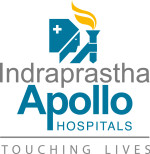Vascular Surgery – FAQs
Vascular disease is a form of cardiovascular disease primarily affecting the blood vessels. Vascular disease usually affects arteries and is symptomised by thickening of the vessel wall. As we age, our arteries tend to thicken, get stiff and narrow when cholesterol or other fatty inflammatory deposits build up inside the artery walls and cause a narrowing or blockage, often referred to as ‘plaque’.
The plaque results in obstructed blood flow leading to diminished amounts of oxygen and nutrients to the body’s organs. The arteries gradually narrow to point where blood flow from the heart to vital organs like the brain, kidneys, bowels and upper and lower limbs becomes compromised. In severe cases, the plaque may also rupture, causing the formation of clots and consequently result in strokes.
The legs and feet are often the first areas of the body to show the effects of this disease, although some patients may have strokes from cholesterol formation in the carotid arteries in the neck. When the narrowing occurs in large and medium-sized arteries, it is called atherosclerosis (hardening of the arteries).
When the narrowing happens in arteries leading to the heart, it can cause a heart attack. The same situation in other areas of the body can cause peripheral vascular disease.
Vascular disease affects most people with age, especially in those who have high risk factors, viz. those suffering with diabetes, high blood pressure, heart disease, a sedentary lifestyle, a family history of vascular disease, poor nutritional habits or those who smoke heavily. Males are prone to vascular disease, but women are at risk as well.
Patients with poor circulation usually have diseased arteries all over their body. The arteries usually affected are in the legs, heart and neck. The severity of the disease and length of time it goes untreated can make a tremendous difference in the clinical outcome of vascular disease. If not treated in time, vascular disease can lead to a stroke, limb amputations or even death.
Vascular disease commonly manifests as:
Carotid artery disease that causes strokes: Carotid arteries are two main arteries that carry blood from the heart, up through the neck, to the brain.
Carotid artery disease results when the carotid arteries become too narrow or obstructed from plaque and limit the blood flow to the brain. Strokes result either from obstruction of blood flow to the brain by the plaque or when bits of plaque and clots break off from the plaque and flow to the brain. Hardening of the arteries (Atherosclerosis) affecting the vessels in the neck can lead to strokes.
Ministrokes (or Transient Ischemic Attacks – TIAs) are usually temporary lasting a few minutes to a few hours, and should be treated as serious medical emergencies requiring immediate treatment.
Some symptoms of strokes include:
- Weakness, numbness, or tingling on one side of the body
- Inability to control movement of a body part
- Loss of vision or blurred vision in one or both eyes
- Inability to speak clearly
- Difficulty talking or comprehending what others are saying
Depending upon the narrowing of the carotid artery, intervention may be recommended even in patients who have not yet had a stroke.
The standard proven form of treatment for this problem is an operation called carotid endarterectomy to remove the plaque. In patients who are high –risk or unsuitable for surgery, a non-invasive treatment (carotid artery stenting) is available.
- Peripheral arterial disease, which can lead to what is referred to as ‘Diabetic foot’: Lower extremity symptoms may include an aching, tired or heavy feeling in the calf of the leg, thigh or buttock when walking or exercising. Patients may also experience discolouration of toes or feet, cold or pale feet and toes with numbness or tingling, decreased hair growth on legs and feet and/or persistent ulcers or infections on the feet, toes or legs. If left untreated, this may cause gangrene of the foot. Re-vascularisation (endovascular and bypass) procedures save limbs and ultimately provide a better quality for the patients. With appropriate care, even patients considered high risk can undergo these procedures safely and effectively, avoiding amputation and achieving healed feet. Even if a portion of the foot can be saved, it allows the person to walk effectively and to lead a reasonably normal life.
- Thoracic or abdominal aneurysms: The aorta is the largest artery in the human body. A thoracic or abdominal aneurysm occurs when the wall of the aorta progressively weakens and begins to bulge. This weakening occurs due to the pressure of the blood. The vessel may continue to enlarge and eventually rupture if left untreated causing severe internal bleeding and death. Rupture of aortic aneurysms can cause rapid bleeding in the chest or abdominal cavity and is often fatal. Complex aneurysms need specialized skills and procedures. Endovascular aneurysm repair for the ruptured aortic aneurysms is an advocated standard of treatment and needs specialized surgical skills.
- Varicose veins and venous disorders : Varicose veins are a known cause of severe physical and psychological discomfort. The superficial veins stretch and bulge under the skin and create pronounced, bumpy ‘cords’ on the legs. They are more common in women and in people who sit or stand in the same position for long periods of time. Endovenous Laser Treatment (EVLT) in conjunction with sclerotherapy effectively treats over 90% of those suffering from varicose veins. This is a minimally invasive procedure that doesn’t require general anaesthesia or incisions and is virtually painless, allowing return to normal active life within a couple of days. In patients with venous ulcers (ulcers caused by venous disease only) there is abnormal reverse flow (reflux) in the veins usually due to damaged or defective deep vein valves. This condition is treated by a technique called ‘Trapdoor Internal Valvuloplasty’, which has been developed by the Apollo Hospitals’ vascular surgery team.


